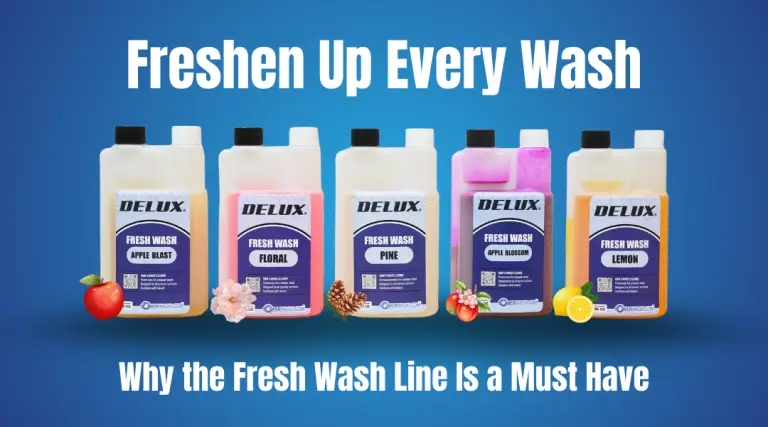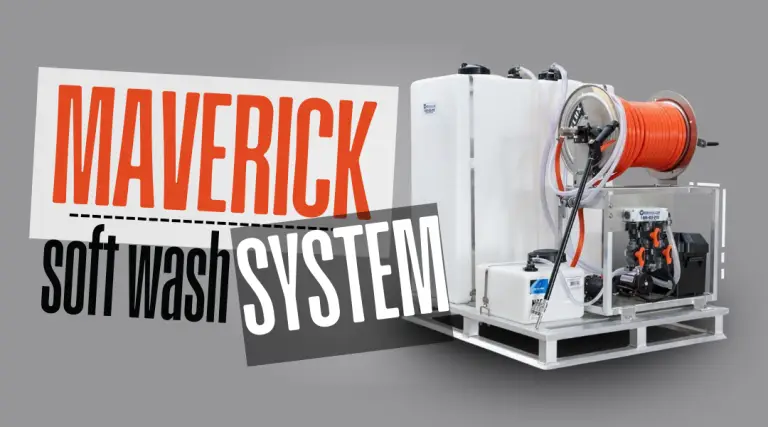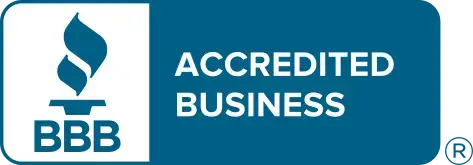- Home
- /
- Power Wash Spray Tips
- /
- What the New GHS Compliance Requirements Mean for Pressure Washing Businesses
Subscribe To Our Newsletter
Stay in the know on the latest products, deals, events, tips & tricks.
Social Media
What the New GHS Compliance Requirements Mean for Pressure Washing Businesses
You may be aware that there are new GHS compliance requirements for chemical labels and Safety Data Sheets to be followed by chemical manufacturers, packagers, and transporters. This new standard, known as the Globally Harmonized System, has already become mandatory in many countries, and will soon be adopted worldwide. The subject matter herein is a bit dry, but YOUR business could be at risk if you are not in compliance with these new standards. You are required by paragraph (f)(6) of the new GHS standard to ensure that containers of hazardous chemicals in your workplace are properly labeled.
Why are the new GHS compliance requirements necessary?
The new GHS compliance requirements are the result of a worldwide agreement that, in order to avoid risks to human health and the environment, chemicals should be classified and labeled in a way that can be universally understood. GHS replaces the many national and regional standards that previously prevailed.
How are the new GHS compliance requirements different from the old system?
The new GHS compliance requirements will force chemical manufactures to re-label and re-document all of their chemical products before the deadline date set for the countries to which they sell. This re-documentation applies to product labels (including shipping labels on cartons and packages) and Material Safety Data Sheets (MSDS – Now called Safety Data Sheets SDS). Both have to comply with the new GHS warning symbols, color codes, product identifiers, numbers, hazard statements, and precautionary statements.
When is the deadline for GHS compliance?
The deadline for compliance is set for June 1st, 2015. PowerWash.com has already been in motion to update ALL of their product labeling and safety data sheets to meet the new GHS compliance requirements.
What information should appear on GHS compliant chemical labels?
“OSHA has updated the requirements for labeling of hazardous chemicals under its Hazard Communication Standard (HCS). As of June 1, 2015, all labels will be required to have pictograms, a signal word, hazard and precautionary statements, the product identifier, and supplier identification.”
Product Identifier
-
- OSHA defines this as “any chemical, common, or trade name or designation that the chemical manufacturer or importer chooses to use on the label.”
-
- The Product Identifier must match what is printed on the Safety Data Sheet (SDS).
Signal Word
-
- There are two signal words used in the GHS standard
-
- Danger is used for more severe hazards, Warning is used for less severe hazards.
-
- It is important to note that a product is hazardous no matter which signal word is used.
Hazard Statement
-
- Hazard statements describe the hazards in a simple, direct manner.
-
- “There is a hazard statement for each hazard category of a hazard class, and it will vary depending on the degree of hazard.” (OSHA.gov)
-
- “As with the signal words, this information conveys the relative severity of the hazard, which impacts how it is handled and controlled.” (OSHA.gov)
Pictograms
-
- Pictograms on chemical labels will be black symbols on a white background with a red diamond border.
-
- There are nine pictograms that may appear on hazardous chemical labels. Eight pictograms represent hazard categories. The ninth represents an environmental risk, but it is not mandatory under the OSHA standard since OSHA does not regulate environmental hazards.
-
- Pictograms can be used to represent several different hazardous effects.
-
- A separate set of 14 pictograms is used on shipping containers for transportation purposes. Both sets are diamond shaped, but the DOT system uses different backgrounds.
-
- If the shipping container is also used as the primary jobsite container, DOT pictograms may be used in place of the OSHA symbols to represent the same hazard.
Precautionary Statements
“A precautionary statement is a phrase that describes recommended measures that should be taken to minimize or prevent adverse effects resulting from exposure to a hazardous chemical, or improper storage or handling.” (OSHA.gov)
There are four types of GHS compliant precautionary statements: Prevention, Response, Storage, and Disposal.
Which containers are required to have a label according to the new GHS compliance requirements?
“Under paragraph (f)(7), employers may use signs, placards, process sheets, batch tickets, operating procedures, or other written material instead of affixing labels to individual stationary process containers, as long as the alternative method identifies which containers it applies to and conveys at least general information regarding the hazards of the chemicals. Paragraph (f)(8) of the standard also addresses portable containers into which the hazardous chemicals are transferred from a labeled container, and which are for the immediate use of the employee who performs the transfer. These portable containers do not have to be labeled.” (OSHA.gov)
What Information Should Appear on GHS compliant Safety Data Sheets?
In addition to maintaining your chemical labels, you must also maintain GHS compliant Safety Data Sheets for every hazardous chemical you use. The new Safety Data Sheets have been divided into an internationally agreed upon sixteen section format with standardized section headings that must be presented in a specific order. The information that is most useful to exposed workers is located at the top and more technical information used by environmental safety professions is located in the later sections. Some of the sections are not considered mandatory by OSHA because they present information that is regulated by other government organizations, but the headings for these sections are still required to be present on the SDS. The sections of the SDS are as follows: (non mandatory sections have been italicized)
-
- Identification
-
- Name of the chemical as it appears on the label
-
- Chemical description or other means of identification
-
- Name address and phone number of the chemical manufacture
-
- Emergency contact phone number
-
- Identification
-
- Hazard(s) identification
-
- Signal Words
-
- Pictographs
-
- Hazard statements
-
- Precautionary statements
-
- Hazard(s) identification
-
- Composition/information on ingredients
-
- Substances should list a chemical name, any synonyms, CAS number, and any impurities or stabilizers that contribute to the classification of the substance.
-
- Mixtures must include the chemical names and concentrations (exact percentage) of all ingredients classified as health hazards unless a trade secret claim is made in accordance with paragraph (i) of §1910.1200.
-
- If a trade secret is claimed, a statement that the specific chemical identity and/or exact percentage (concentration) of composition has been withheld as a trade secret is required. (OSHA.gov)
-
- Composition/information on ingredients
-
- First-aid measures
-
- Firefighting measures
-
- Accidental release measures
-
- Handling and storage
-
- Exposure control/personal protection
-
- Physical and chemical properties
-
- Stability and reactivity
-
- Toxicological information
-
- Ecological information
-
- Disposal considerations
-
- Transport information
-
- Regulatory information
-
- Other information
-
- Date of preparation or last revision
-
- Other information
Where can GHS compliant chemical labels and safety data sheets be obtained?
Chemical manufacturers and resellers should provide GHS compliant safety data sheets and labels for each chemical they produce or sell. If you do not receive a label or SDS with your first shipment, you must request one as soon as possible. If you cannot obtain a label and or SDS you should contact your local OSHA office. Be sure to check all documents for accuracy and completeness. Most manufactures and resellers will provide new labels and safety data sheets if any information changed, but it is a good idea to obtain new copies on a regular schedule to ensure that the information is current.
Information for this article was obtained from
https://www.osha.gov/Publications/OSHA3695.pdf
Hazard Communication: Small Entity Compliance Guide for Employers That Use Hazardous Chemicals OSHA 3695-03 2014 (n.d.): n. pag. Web. 16 Mar. 2015.
This article is not intended to be a comprehensive guide. It should not be used as legal advice. Do not rely on this article as an alternative to information provided by the Occupational Safety and Health Administration. If you have any specific questions, you should visit (www.osha.gov) or call (800) 321-OSHA (6742).
Share This Post
More To Explore
Soft Wash Additive That Smells Amazing? Meet Fresh Wash
Freshen Up Every Wash Soft washing is all about precision, power, and presentation — and nothing completes a job like ...
Mastering the Art of Pressure Washing: Key Insights on Surface Cleaners
For professionals in the pressure washing industry, a surface cleaner is an indispensable tool, particularly for those who specialize in ...
The Wrangler™ Chemical Sprayer: The Ultimate Tool for Professional Cleaning Applications
For commercial cleaners and pressure washing professionals, efficient chemical application is key to achieving the best results. The Wrangler™ Chemical ...
Professional-Grade Soft Washing with the PowerWash.com Maverick 12V Soft Wash System
Soft washing is an advanced cleaning method that utilizes low-pressure water combined with biodegradable cleaning agents to effectively remove organic ...









